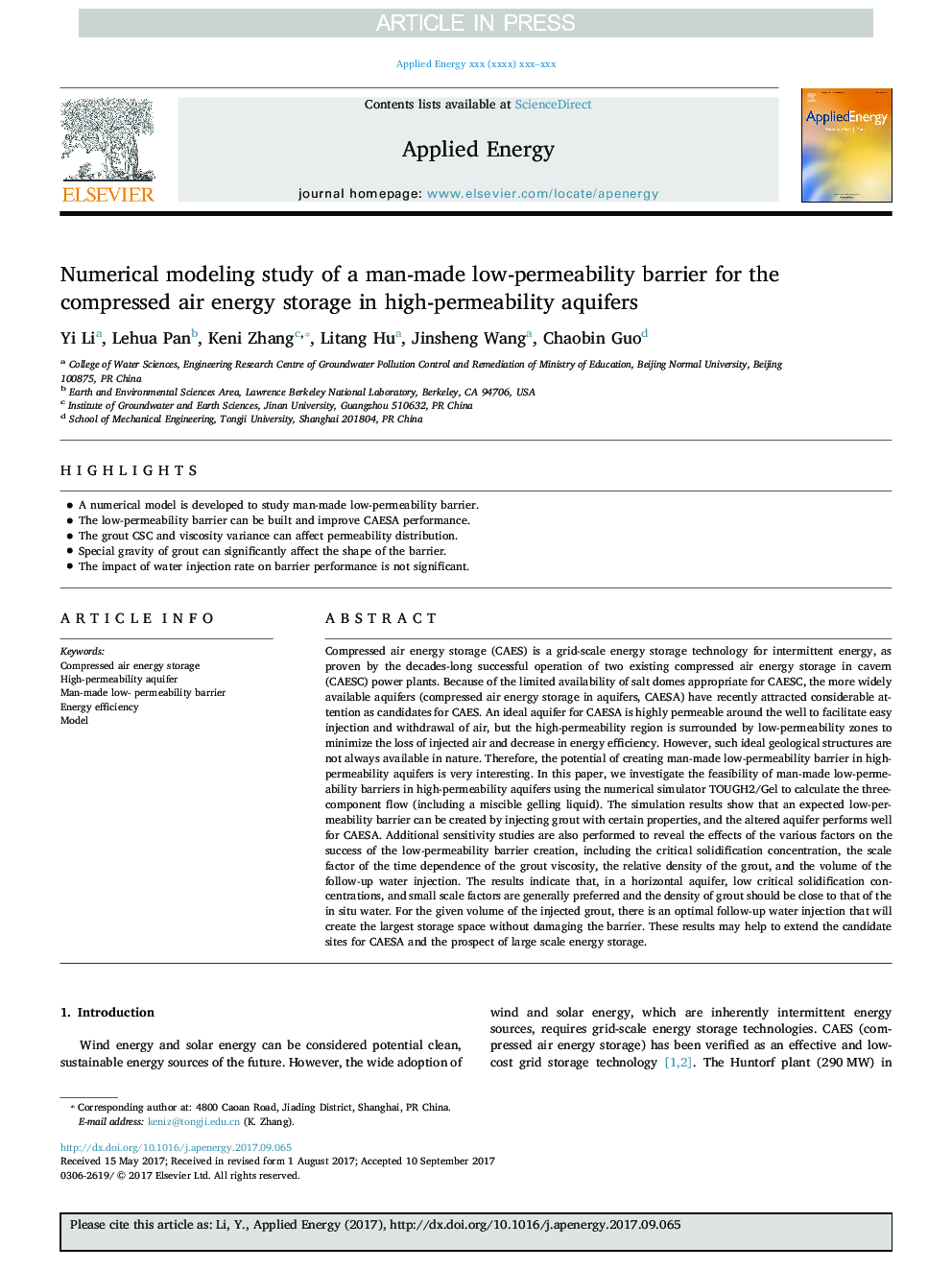| کد مقاله | کد نشریه | سال انتشار | مقاله انگلیسی | نسخه تمام متن |
|---|---|---|---|---|
| 6681759 | 1428082 | 2017 | 14 صفحه PDF | دانلود رایگان |
عنوان انگلیسی مقاله ISI
Numerical modeling study of a man-made low-permeability barrier for the compressed air energy storage in high-permeability aquifers
ترجمه فارسی عنوان
مطالعه مدل سازی عددی یک مانع از نفوذ پذیری ساخت انسان برای ذخیره انرژی هوای فشرده در آبخوانهای پر نفوذ پذیر
دانلود مقاله + سفارش ترجمه
دانلود مقاله ISI انگلیسی
رایگان برای ایرانیان
کلمات کلیدی
ذخیره انرژی فشرده، آبخوان بالا نفوذ پذیر، مانع نفوذپذیری کم انسان، بهره وری انرژی، مدل،
موضوعات مرتبط
مهندسی و علوم پایه
مهندسی انرژی
مهندسی انرژی و فناوری های برق
چکیده انگلیسی
Compressed air energy storage (CAES) is a grid-scale energy storage technology for intermittent energy, as proven by the decades-long successful operation of two existing compressed air energy storage in cavern (CAESC) power plants. Because of the limited availability of salt domes appropriate for CAESC, the more widely available aquifers (compressed air energy storage in aquifers, CAESA) have recently attracted considerable attention as candidates for CAES. An ideal aquifer for CAESA is highly permeable around the well to facilitate easy injection and withdrawal of air, but the high-permeability region is surrounded by low-permeability zones to minimize the loss of injected air and decrease in energy efficiency. However, such ideal geological structures are not always available in nature. Therefore, the potential of creating man-made low-permeability barrier in high-permeability aquifers is very interesting. In this paper, we investigate the feasibility of man-made low-permeability barriers in high-permeability aquifers using the numerical simulator TOUGH2/Gel to calculate the three-component flow (including a miscible gelling liquid). The simulation results show that an expected low-permeability barrier can be created by injecting grout with certain properties, and the altered aquifer performs well for CAESA. Additional sensitivity studies are also performed to reveal the effects of the various factors on the success of the low-permeability barrier creation, including the critical solidification concentration, the scale factor of the time dependence of the grout viscosity, the relative density of the grout, and the volume of the follow-up water injection. The results indicate that, in a horizontal aquifer, low critical solidification concentrations, and small scale factors are generally preferred and the density of grout should be close to that of the in situ water. For the given volume of the injected grout, there is an optimal follow-up water injection that will create the largest storage space without damaging the barrier. These results may help to extend the candidate sites for CAESA and the prospect of large scale energy storage.
ناشر
Database: Elsevier - ScienceDirect (ساینس دایرکت)
Journal: Applied Energy - Volume 208, 15 December 2017, Pages 820-833
Journal: Applied Energy - Volume 208, 15 December 2017, Pages 820-833
نویسندگان
Yi Li, Lehua Pan, Keni Zhang, Litang Hu, Jinsheng Wang, Chaobin Guo,
